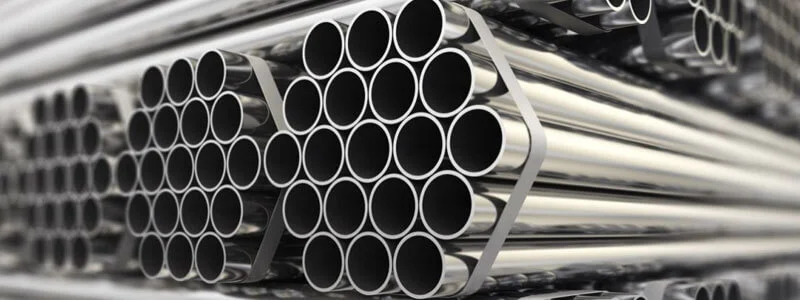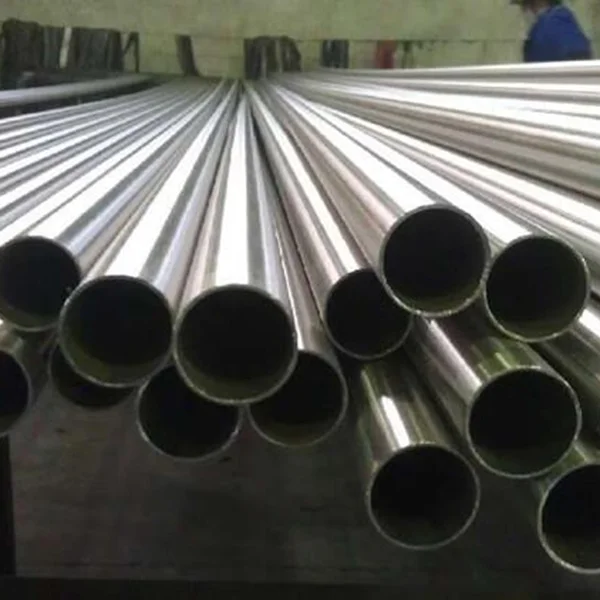High-Performance 316 Stainless Steel Pipes: Quality and Durability
Stainless steel is a highly versatile and widely utilized material across various industries due to its exceptional properties and enduring nature. This steel alloy contains a minimum of 10.5% chromium, forming a protective oxide layer on its surface, rendering it remarkably resistant to corrosion, staining, and rust. This unique attribute distinguishes stainless steel from conventional steel, making it indispensable in a multitude of applications.
Among the notable variants of stainless steel, 316 stainless steel pipe, commonly referred to as marine-grade stainless steel, holds significant prominence. It belongs to a specific alloy subgroup within the stainless steel family, characterized by the inclusion of additional alloying elements, primarily molybdenum (typically around 2-3%). This molybdenum content significantly enhances its resistance to corrosion, particularly in challenging environments like those exposed to saltwater or chemicals.

The outstanding features of 316 stainless steel include its exceptional corrosion resistance, impressive strength, and remarkable versatility. These qualities make it an indispensable choice in demanding applications where reliability and durability are of paramount importance.
Attributes of 316 Stainless Steel
Chemical Makeup
The 316 stainless steel, also known as the "marine grade," stands out because of its remarkable corrosion resistance. It's composed of:
1)Chromium (Cr): Ranging from 16-18%. It's the vital component responsible for the development of the passive layer which imparts corrosion resistance to stainless steels.
2)Nickel (Ni): Usually found in 10-14%. Nickel fortifies the austenitic structure, ensuring it's non-magnetic and also heightens its ductility and resilience.
3)Molybdenum (Mo): About 2-3%. It bolsters resistance against both pitting and crevice corrosion, especially in environments rich in chlorides.
4)Besides these main constituents, minor amounts of Silicon, Manganese, and Carbon are also present in the 316 stainless steel.
Mechanical and Physical Characteristics
1)Strength: The tensile strength of 316 stainless steel is typically close to 580 MPa (84,100 psi), and its yield strength is approximately 290 MPa (42,100 psi).
2)Ductility: Notable for its ductility, it can be molded into various forms without breaking.
3)Toughness: Known for its robust toughness, especially at sub-zero temperatures, it's often a preferred choice for cryogenic purposes.
4)Temperature Endurance: It retains its characteristics at extreme temperatures. Though its austenitic structure is stable over a vast temperature range, extended exposure to elevated temperatures might cause the formation of chromium carbides, compromising its corrosion resistance.
Resistance to Corrosion
Molybdenum's presence in 316 stainless steel notably boosts its defense against pitting and crevice corrosion in chloride-rich settings. This quality makes it ideal for scenarios where there's exposure to saltwater, like marine or coastal settings.
1)Molybdenum's Contribution: Mo establishes firm connections with oxygen, thwarting the metal's surface dissolution. In chloride-filled environments, such as seawater, areas of the passive layer rich in Molybdenum act as shields, slowing down the chloride's infiltration rate. As a result, 316 stainless steel with Molybdenum is less prone to pitting and crevice corrosion than its counterpart, the 304 stainless steel, which lacks Molybdenum.

2)Other Corrosive Elements: Apart from chloride-rich surroundings, the enhanced corrosion resistance of 316 stainless steel is also effective against diverse corrosive agents, including specific acids and bases.
To encapsulate, the 316 stainless steel is esteemed for its exceptional resistance to corrosion, particularly to chlorides. Its mechanical qualities make it adaptable to a myriad of applications. Yet, it's vital to operate within its constraints and in situations where its advantages are maximally utilized.
Comparison with Other Stainless Steel Grades
304 vs. 316: Corrosion Resistance and Applications
1)Corrosion Resistance:
304: This is the most common form of stainless steel. Its primary alloying elements are chromium (typically 18%) and nickel (typically 8%). While it exhibits good corrosion resistance in many environments, it's particularly susceptible to pitting and crevice corrosion in saline environments.
316: As mentioned previously, the addition of molybdenum (2-3%) in 316 enhances its resistance to pitting and crevice corrosion, especially in chloride-rich environments. This makes it superior to 304 in terms of corrosion resistance in saline conditions or in the presence of certain aggressive chemicals.
2)Applications:
304: Widely used in kitchen equipment, architectural panels, and sinks. It's suitable for various applications where high corrosion resistance isn't a priority.
316: Often referred to as "marine grade," 316 is preferred in environments with high exposure to salt, such as coastal installations, marine applications, and chemical processing plants. Its superior resistance makes it a preferred choice for applications demanding higher corrosion resistance.
316L Variant: The Low Carbon Version
316L: This is a low carbon variant of 316 stainless steel pipe. The "L" stands for "low carbon." The reduced carbon content helps minimize the risk of carbide precipitation during welding, which can degrade the steel's resistance to corrosion around the welded area.
Benefits: 316L is especially useful in welded constructions. By reducing the carbon content, it offers better resistance to intergranular corrosion after welding or when exposed to high temperatures. This makes it suitable for applications where heavy welding is required or for items that can't be annealed post-welding.
Advantages of 316 over Other Stainless Steel Types in Specific Applications
1)Marine Environments: Due to its enhanced resistance to chlorides, 316 is the stainless steel of choice for marine applications, offering longevity and durability where other grades might corrode more rapidly.
2)Chemical Processing: 316's resistance to a wide range of chemicals makes it ideal for processes that use aggressive chemicals or where there's a combination of corrosive agents.
3)High-Temperature Resilience: While prolonged exposure to high temperatures can impact its properties, 316's initial resistance to oxidation at elevated temperatures is superior to many other stainless steel grades.
4)Pharmaceutical and Medical Applications: The non-reactive nature of 316, combined with its resistance to corrosion in biologically active environments, makes it a popular choice for medical implants, surgical instruments, and pharmaceutical processing.
High-Performance Features of 316 Stainless Steel Pipe
Enhanced Durability
316 stainless steel pipe showcases remarkable endurance and longevity, especially in corrosive settings. This robustness stems from its unique alloying composition, with elements like molybdenum playing a pivotal role. As a result, items made from 316 stainless steel tend to have a longer operational lifespan in corrosive environments, reducing replacement costs and downtime.
Superior Weldability
One of the standout features of 316 stainless steel is its weldability. The material can be efficiently welded by most standard techniques, and the welded joints exhibit excellent strength and toughness. The low-carbon variant, 316L, offers enhanced protection against intergranular corrosion post-welding. Thus, structures and equipment made using 316 stainless steel benefit from strong, durable, and corrosion-resistant welds, ensuring long-term structural integrity.
Thermal Properties
316 stainless steel exhibits stability across a broad temperature spectrum. It retains its mechanical properties, such as strength and toughness, even at elevated or cryogenic temperatures. This thermal stability ensures that 316 stainless steel remains reliable and consistent in applications exposed to fluctuating temperatures, making it a favored choice in industries such as chemical processing or cryogenic storage.
Resistance to Pitting and Crevice Corrosion
One of the hallmarks of 316 stainless steel is its outstanding resistance to pitting and crevice corrosion, especially when compared to other stainless steel grades. Its alloying elements, particularly molybdenum, form a protective barrier against aggressive agents like chlorides.
In environments such as marine settings or where chloride exposure is common, 316 stainless steel proves its mettle. Where other materials might quickly succumb to the damaging effects of pitting or crevice corrosion, 316 remains resilient. This resistance ensures that structures or components made from 316 stainless steel in marine or chloride-rich environments maintain their integrity and function for longer periods.
Applications of the 316 Stainless Steel Pipe
Marine Industry
1)Boat Fittings: 316 stainless steel's resilience against saltwater corrosion makes it the preferred choice for boat fittings. Whether it's for anchors, deck fixtures, or structural elements of the boat, the use of 316 ensures durability against the constant saline onslaught.
2)Chemical Containers: In the marine environment, containers storing chemicals are subject to a dual threat - from the stored chemicals and from the surrounding saline conditions. 316 stainless steel pipes offer resistance to both, ensuring safety and longevity.
3)Marine Hardware: Hardware components such as cleats, winches, and fasteners made of 316 stainless steel can withstand the harsh marine conditions, offering reliability and reducing the need for frequent replacements.
Food and Pharmaceutical Processing Equipment
The processing of food and pharmaceuticals demands strict hygiene standards. 316 stainless steel pipes are non-reactive, making them ideal for transporting products without risk of contamination. Their smooth interior surfaces facilitate easy cleaning and minimize bacterial growth.
Additionally, the corrosion resistance of 316 is invaluable in these industries, especially when dealing with acidic or saline food products or aggressive pharmaceutical agents. Equipment longevity and the assurance of product purity are paramount, and 316 stainless steel delivers on both fronts.
Water Treatment Plants
Water treatment plants often deal with chlorinated water or water with other aggressive chemicals for purification. 316 stainless steel pipes provide an ideal solution due to their excellent resistance to chloride-induced corrosion.
These pipes ensure a longer lifespan for the infrastructure, minimizing maintenance needs and reducing the overall operational costs of the treatment facility.
Architectural Panelling, Railings, and Trim
1)Aesthetics: The natural luster and finish of 316 stainless steel give a modern and sophisticated look, making it a popular choice for architectural panels, facades, and decorative installations.
2)Performance: Beyond looks, its resistance to environmental factors like rain, humidity, and pollutants ensures that architectural features remain pristine and rust-free for years.
2)Railings and Trim: For safety features like railings, the combination of strength and corrosion resistance makes 316 stainless steel pipes an obvious choice. They can endure the rigors of weather, human traffic, and urban pollution, all while maintaining their structural integrity and appearance.
CONCLUSION
316 stainless steel pipe is more than just another grade of steel. Its unique blend of properties – from exceptional corrosion resistance to superior weldability – has positioned it as a go-to material for applications demanding both durability and aesthetic appeal.
Whether it's braving the corrosive marine environments, ensuring purity in food and pharmaceutical industries, providing resilience in water treatment facilities, or adding luster and longevity to architectural marvels, 316 stainless steel stands tall, delivering unparalleled performance. Its versatility, combined with its high-performance features, ensures that it remains a favored choice across industries, underpinning infrastructure, and enhancing our everyday experiences. In essence, 316 stainless steel is a testament to the power of material science to drive innovation and meet the diverse challenges of the modern world.






